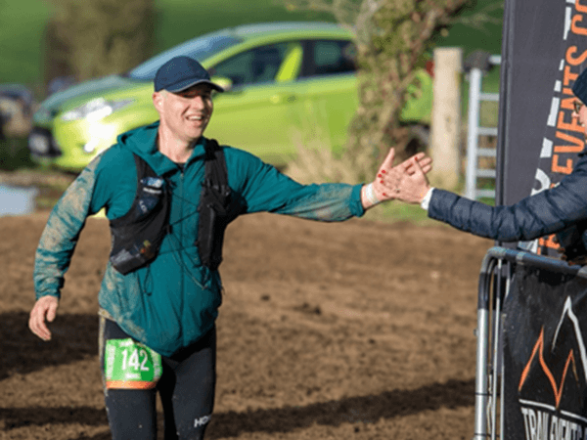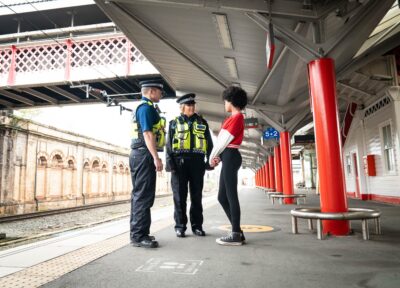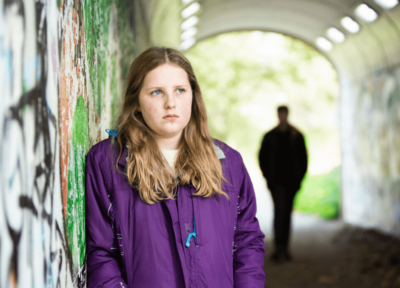
UK aid cuts will be “devastating” for world’s most vulnerable children
Huge cuts to UK overseas aid put millions of children at risk of extreme poverty, homelessness and exploitation.
“The biggest challenge of my life is about to come to an end. A solo 100km attempt to run from Rugby to Tewkesbury is complete. I sink to the floor and look up at the sky, shedding a tear as I can’t believe how far I’ve just ran.”
12 months. 15 marathons. A life-time of achievement for vulnerable children across the world.
1920
miles ran in total
91194
total elevation
In January 2024 I embarked on a year long challenge to run a marathon a month for The Railway Children.
My new found love of running came in 2023 as I changed my relationship with alcohol and found running to be my ‘go-to’ to relieve stress and get into the best shape of my life.
A year-long challenge meant that this would be not only a physical battle, but mentally challenging. I knew there would be times that I’d get ill, be on holiday, work would get in the way, I’d need to manage injuries and there would be times that I flat out didn’t want to go for a 20-mile training run.
Ensuring the word ‘challenge’ was met, I also knew I couldn’t just complete marathons. I needed to increase the distance to ultramarathons to keep interest keen through the year, not only for potential donors, but also myself.

I booked several events at the start of the year including my first ultra marathon in February at Lulworth Cove. This was a 34-mile coastal trail run with 7,106ft elevation. After getting my first marathon ticked off three weeks earlier I went into it feeling confident.
At best I was naive, more likely out of my depth as after 19 miles my quads cramped up like never before and I struggled to walk, let alone run.
To put things into perspective, 7,106ft is like going up Snowden – twice.
What made this tougher was the conditions. The ground was soddened from a wet winter and most of the day was spent battling the mud and sliding down hills.
With my quads and calves cramping up constantly, I very nearly pulled out at mile 27 but managed to find some inner resilience I’d never met before, finally finishing eight hours after starting.
After a grueling test on the Dorset Coast, the marathon in March felt as comfortable as a marathon could be and come April I had the best piece of advice that changed everything of what I thought would be possible.
I’d booked my place at The Railway Children/ C2C/ XNRG event, running 50-miles from Upminster Station to Southend-on-Sea in June. I also had a 35-mile ultramarathon planned in May and I hadn’t figured out how to effectively train for such long distances.
My event in April was a trail marathon and the organiser provided a leader as we split into groups for the run. He gave me the advice that I’d been looking for, to get up to the longer distances (35-miles, 50-miles+), you need to go back-to-back.
Sounds so simple but what this means is that your training now goes from 20-30 miles per week to 40-60 miles per week.
After training like this for a month, I went into May’s 35-miler feeling confident. The weather had finally warmed up and it was a very hot 28C, but I finished strong and was ready for the next challenge.
Heading down to London for the Railway Children C2C and XNRG event, I felt nervous as the distance was a massive leap from what I’d completed in February and May, but knew I’d done all I could training wise.
Leaving Upminster, my legs felt heavy from the start with nervous energy, and they didn’t really settle throughout the race. Leaving the checkpoint at 25-miles I needed a bit of an uplift, so I recorded a live video for my Instagram of how I was getting on and where I was.

Getting past 40 miles and I was now sore and chaffing in places I didn’t realise I could be.
It amazes me that the stiffness only lasts a few minutes and once you start moving you get going and before you know it, back to running at a decent pace again.
The last two miles running along the Southend promenade and crossing the line felt like a huge achievement and I was buzzing. It was made even better with tea and cake to celebrate with the other runners.
In July and August, I completed a marathon and ultramarathon respectively and going into September’s event in Richmond, I was managing a niggle in my knee and treated it like a very long training run.
To gather momentum and support, I decided to set-up a sweepstake to try and generate as much fundraising as possible: Guess the time it’ll take me with the closest guess winning a hamper. The sweepstake generated over £1,000 itself and as I set off I was already beaming with how much this run alone had raised.

The 100km was wild, setting off on my own and running 54km before being met by my wife and friends in Stratford-on-Avon. Armed with food, drink, massage guns and a change of clothes following my learnings from the chaffing during the 50-miler!
Leaving Stratford with clean, dry clothes felt like such a boost as I headed further West towards Tewskesbury.
At 80km my wife again met me in Evesham with more food, drink and another change of clothes!
Leaving Evesham, the sun was starting to dip, and I’d already ran as far as I’d ever had before, but with 20km to go still this was going to be a mental battle to get to Tewkesbury.
Hamstrings and calves were stiff when I left but they loosened up soon after so I could jog again.

At 90km I started to feel queasy but kept drinking fluid and eating what energy bars I had to keep fuelling up to get through.
I’d been following the National Cycle Network 41 the whole way which now led me off-road. The final 10km would be through fields to add one last test to get to the furthest destination of the challenge.
Running in a hi-vis orange top and the reflection of my chest light, the scared sheep in the fields ran away and I was desperately trying to not to twist an ankle during the final hurdle.
Out the fields and back on road I ran over the M5 bridge, and I knew the end wouldn’t be far away from here. What a day!
Following the 100km I had my longest break of the year, six weeks before flying to San Fransisco for a 50km ultra with over 6,000ft elevation.
The stunning setting of the Golden Gate Bridge, rolling hills, beaches and trails of California made this very hard run enjoyable. It also provided the added bonus of a holiday before flying home to complete the challenge in December with a bang.
I was thinking about how I could complete the challenge after such an epic year, and I always thought I’d like to do my last run on Christmas Day.

This included a 50km ultra in the Surrey Hills to take me up to the magic number of 15 for the year.
Six days later I was back out for a marathon and much like March, this felt as comfortable as a marathon can do after two difficult 50km ultras in 3 weeks.
Instead of just sitting and chilling out the day after a marathon like every normal person wants to do, active recovery is now part of my routine. I’d run long (20-30km) and slow the day after an event to help recover – who’d have thought!
The adrenaline of the day meant that this run went very quickly. I spent a lot of time reflecting on the year, what I’d learned, how much I enjoyed it and the huge difference the generous donations would make to the Railway Children charity.
I was sad that it was ending, but in need of a break. Coming home I was greeted by my wife for the last time with a bottle of alcohol-free Prosecco to pop and celebrate what really had been one of the greatest achievements of my life.
Fancy challenging yourself in 2025? Find out more here.

Huge cuts to UK overseas aid put millions of children at risk of extreme poverty, homelessness and exploitation.

BTP plays a crucial role in protecting vulnerable children on the rail network. We worry upcoming cuts could affect those at risk.

We recently collaborated with other members of the Bishop Line Community Rail partnership to speak to more than 100 Year 8 students about the importance of rail safety and mental wellbeing.

How we give young people the tools to drive real change.

Together, we can give all young people the tailored support they deserve.

Child Exploitation Awareness Day: How Railway Children protects children at risk of exploitation.